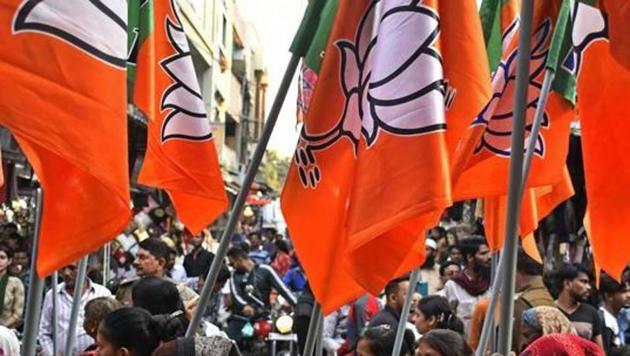Hindutva finds few takers among floating voters
The process of consolidation of the floating voter behind the Congress began in the 2017 Gujarat elections when the party crossed 40% vote share for the first time since 1985. A reverse consolidation against the BJP suggests that a Hindutva push might not be having the desired impact on voters from the BJP’s perspective.
After its electoral setbacks in Chhattisgarh, Madhya Pradesh and Rajasthan, the Bharatiya Janata Party (BJP) is looking for ways to bounce back in 2019. An HT analysis on December 13 showed that the BJP’s losses in these states were spread across caste, class and geographic boundaries. Can ratcheting up the religious polarisation rhetoric help the BJP overcome this problem? After all, the party has often taken this route to forge a rainbow Hindu coalition.

An HT analysis suggests that this might not work as well now. This is because Hindutva is not very appealing to the floating voter, who played an important role in BJP’s victories under the Narendra Modi wave in the period from 2013 to 2017 (more on this later). A floating voter is one who normally does not vote for either the Congress or the BJP.
This analysis has looked at vote shares of the BJP and the Congress in Rajasthan, Madhya Pradesh, Chhattisgarh, Uttarakhand, Gujarat and Himachal Pradesh. These are the states which usually see a direct contest between the Congress and the BJP. This helps discount the role (or lack of it) of coalitions in election outcomes at the all-India level.
The period from BJP’s victories in the 2013 election cycle in Chhattisgarh, Madhya Pradesh and Rajasthan to its 2017 victory in Gujarat and Himachal Pradesh is included under the Modi wave. This classification is justified by the fact that except in the 2015 assembly elections in Delhi and the 2017 elections in Punjab, the BJP increased its vote share in every election held during this period.

While many, including several in the BJP, saw this process as the beginning of a “Congress-mukt Bharat” phase in Indian politics, a careful reading of vote shares suggests otherwise. Except in the 2013 Rajasthan elections, the Congress, though it lost elections to the BJP, did not suffer any significant erosion in its previous vote share in these direct contest states. In fact, its vote share actually increased in the 2013 Madhya Pradesh and Chhattisgarh elections and the 2017 Gujarat elections. The BJP’s vote share, however, increased significantly, which is what explains its electoral victories.

How did the BJP increase its vote share without eating into the Congress vote? It attracted a large chunk of floating voters. This is borne out from the fact that the sum of BJP-Congress vote shares went up in all elections under the Modi wave.
It is this section of floating voters who seems to be shifting towards the Congress now. The Congress’s vote share in the 2018 assembly elections of Chhattisgarh, Madhya Pradesh and Rajasthan is the highest since 2003.
The process of consolidation of the floating voter behind the Congress began in the 2017 Gujarat elections when the party crossed 40% vote share for the first time since 1985.
A reverse consolidation against the BJP suggests that a Hindutva push might not be having the desired impact on voters from the BJP’s perspective.
To be sure, even BJP victories under the Modi wave have always had extra elements in addition to Hindutva. For example, this author argued in an earlier piece that the BJP’s 2017 victory in Uttar Pradesh was achieved through a mix of ‘kamandal’ (Hindutva) and ‘Mandal’ (multi-caste coalition).
The statistics given above also underline the importance of BJP’s “Achhe Din” campaign, which promised economic well being to all, in its success under the Modi wave.
In the run-up to the 2019 elections, the economic narrative might be more important in influencing the floating voter. The BJP will find it relatively more difficult to capture the imagination on this front, given the fact that it will also face anti-incumbency this time, unlike its 2014 campaign.
To be sure, the government will leave no stone unturned to curb the anti-incumbency through various steps until the elections. For example, the announcement of reservations for economically weaker sections of upper castes is an attempt to control the anger on the employment front. Whether or not such efforts will bear fruit, will only be known after the results.




